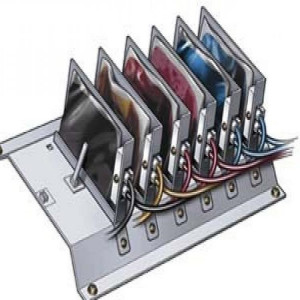| Kodak |

| No Title | 0.61 MB |
| Registration Date | 3 Apr 2019 |
| Revision Date | 3 Apr 2019 |
| Share |
Printing Ink
InkInterestingly, the 5260 uses nanopigment technology that reportedly offers brighter, more fade-resistant images than you would normally expect from pigmented inks. Plus, it delivers drop sizes as small as 10 nanometers.
When light strikes an opaque object, that object's surface determines whether the light is fully reflected, fully diffused or both. Conversely, light that strikes a transparent object is partially transmitted and partially reflected, like sunshine on a car's windshield. Because of the pigment's miniature size, Kodak's nanopigments give its inks translucent (good) characteristics. In other words, the larger (bad), non-nano pigments -- like scattered leaves on a windshield -- block incoming light, and this shadowing reduces (dulls) the reflectance and refractance of color, in wavelengths, back to the observer.
Kodak says it has commercialized a set of pigmented inks with pigment particle sizes in the 10-20 nanometer range, which improves the color gamut of its cyan, magenta and yellow.
Other, non-Kodak studies also show that certain oxide-based nanopigments serve as photoprotective agents by either reflecting or scattering UV radiation. Thus, nanocolorants do offer higher color saturation and, if combined with light-dispersing nanopigments, improved UV fade resistance.